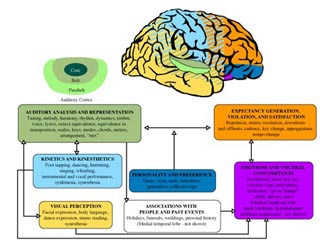Home » Course Layouts » Free Course Layout Udemy
This course is a survey of perceptual and cognitive aspects of the psychology of music, with special emphasis on underlying neuronal and neurocomputational representations and mechanisms.
0
1
English
English [CC]
- Learn basic syntax that can apply to any language.
- Learn what is a programming language and the basic concepts for beginners.
- Understand what is Javascript in it's truest form.
- Know the basic syntax of Javascript.
- Know some hidden quirks in Javascript.
Description
Basic perceptual dimensions of hearing (pitch, timbre, consonance/roughness, loudness, auditory grouping) form salient qualities, contrasts, patterns and streams that are used in music to convey melody, harmony, rhythm and separate voices. Perceptual, cognitive, and neurophysiological aspects of the temporal dimension of music (rhythm, timing, duration, temporal expectation) are explored. Special topics include comparative, evolutionary, and developmental psychology of music perception, biological vs. cultural influences, Gestaltist vs. associationist vs. schema-based theories, comparison of music and speech perception, parallels between music cognition and language, music and cortical action, and the neural basis of music performance.
Course content
- Course introduction Unlimited
- Overview of music’s psychological and social functions Unlimited
- Overview: auditory perception and the time sense Unlimited
- Overview of the auditory system Unlimited
- Pitch Unlimited
- Pitch mechanisms and neurocomputational models Unlimited
- Timbre Unlimited
- Consonance, dissonance, and roughness Unlimited
- Scales, tuning and harmony Unlimited
- Melody Unlimited
- Rhythm, timing, and expectation Unlimited
N.A
- 5 stars0
- 4 stars0
- 3 stars0
- 2 stars0
- 1 stars0
No Reviews found for this course.










